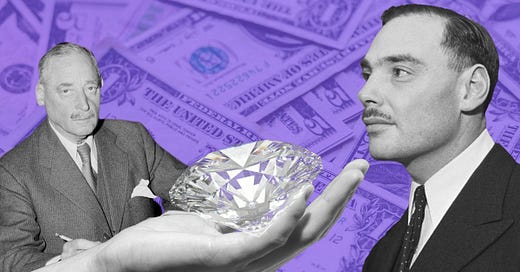The Uncut Truth: Oppenheimers, De Beers, and the Weight of a Diamond
How Silence Built a Diamond Empire
Rain lashed against the windows of a Johannesburg office in 1953. Ernest Oppenheimer signed a contract by lamplight, the ink bleeding slightly on the page. Outside, the city’s mine workers walked home through mud, their boots heavy with the weight of the earth they’d carved. Some carried silica in their lungs like hidden stones.
You know the slogan: A diamond is forever. It’s clean. Timeless. But diamonds aren’t found in display cases. They’re pulled from deep cracks in the world—places where light doesn’t reach. For decades, one family name hung over those cracks: Oppenheimer. Their company, De Beers, didn’t just sell gems. It sold a dream stitched together with silence.
This isn’t about conspiracy. It’s about gravel under fingernails. Pay stubs with zeros missing. A child in Angola holding a machete because a diamond bought it. Let’s start where the shine doesn’t reach.
1: The Monopoly That Fed on Silence
De Beers didn’t build an empire. It dug one. By 1987, nine out of ten diamonds worldwide passed through their hands. Control started underground. In South Africa’s mines, Black workers knelt in tunnels so tight they scraped their spines on rock. They breathed air thick with dust. White supervisors called it "koffiehuis"—coffee house—a joke about the haze.
When a worker pocketed a pebble-sized diamond, security didn’t arrest him. They buried him. James Ramoroka testified in 1998: “They’d throw you into an old shaft. Seal it. Your cries sounded like wind to them.” No police reports. No court dates. Just a ledger entry in Sandton: "Stock adjustment."




